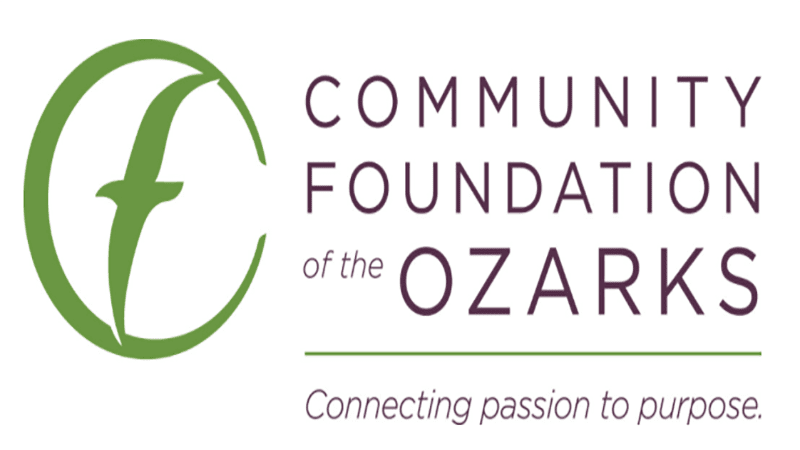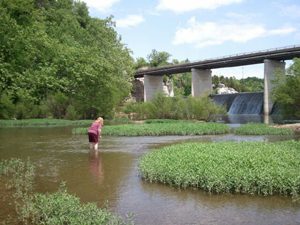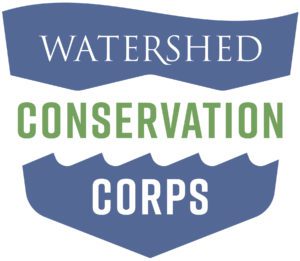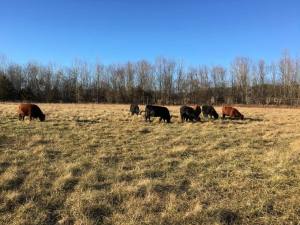Current Programs
Watershed Conservation Corps (WCC)
What is the WCC?
Watershed Conservation Corps was formed in 2017. Since it began, the Corps has created opportunity for young people to play a part in protecting the Ozarks’ natural environment while serving the community. WCC is the only organization of its kind in the region and its services have proven a beneficial way to support its partners in Greene county and beyond while simultaneously providing entry-level conservation work for our future stewards!
Providing Conservation Services
The WCC works with its partners to complete habitat restoration, vegetation management, trail maintenance, native seeding, tree planting, and prescribed fire. Visit our Services page for more information.
To hire WCC or discuss a potential project, Contact Us or email [email protected].
Watershed Natives
Why Native Plants?
Native plants are integral to soil health, pollinator and wildlife habitat, erosion prevention, biodiversity, and nutrient runoff reduction. The virtues of native plants are becoming increasingly understood and utilized in a variety of applications in agriculture, rural development, and urban development. We think they are beautiful both physically and functionally.
Why Purchase Watershed Natives?
Choosing to purchase Watershed Natives supports watershed health and the students at Hillcrest High School. In an exciting partnership with Springfield Public Schools (SPS), the Watershed Committee of the Ozarks has helped develop a 3-year “college and career pathway” program at Hillcrest. SPS describes the pathway this way: “The Environmental and Natural Resource Management Pathway teaches students how to properly manage land, water, soil, plants, and animals. These classes have a focus on how management affects the quality of life for both present and future generations.” Learning about native plants and helping produce them will be a core element of this experience. The Pathway program will also provide industry recognized credential opportunities, and readiness for a variety of college and/or career opportunities such as agriculture, environmental restoration, the sciences, and more.
How did Watershed Natives Begin?
There are some amazing native plant growers in Missouri, and in particular, we want to thank Missouri Wildflower Nursery and Forest Keeling for helping set us up for success. We recognize that a rising tide floats all boats, and we need to increase partnerships and production locally and statewide to keep pace with demand. We intend to build Watershed Natives into a financially sustainable program through plant sales, but the investment of the Darr Family Foundation and Community Foundation of the Ozarks have provided the start-up capital to begin. We are excited about the future of this program and grateful to those mentioned here for helping us get started.


Groundwater Monitoring
The Watershed Committee of the Ozarks partners with City Utilities of Springfield on a groundwater monitoring program. This program provides a proactive groundwater monitoring collection of quarterly water samples from area springs to measure water quality parameters and identify any existing or emerging groundwater contaminates in our region. Sample collection began April 2019 and are collected each quarter.
A Watershed Committee staff member collects quarterly water samples from springs and delivers them to the Blackman Water Treatment Plant, a state certified laboratory, for analysis.
Summer Sampling - Currently Inactive
 During the summer, WCO assists the Springfield-Greene County Health Department with collecting their weekly samples in streams that are public swimming locations. After the samples are analyzed by the Springfield-Greene County Health Department, the E.Coli and Total Coliform results are posted on the health department’s webpage the following day for the public to access. In years past, the Watershed Committee collects samples bi-weekly.
During the summer, WCO assists the Springfield-Greene County Health Department with collecting their weekly samples in streams that are public swimming locations. After the samples are analyzed by the Springfield-Greene County Health Department, the E.Coli and Total Coliform results are posted on the health department’s webpage the following day for the public to access. In years past, the Watershed Committee collects samples bi-weekly.
This year the WCO was able to assist the health department by handling all the field sample collections. This water testing is not regulatory; it is voluntary and a courtesy to the people of Greene County.
To find weekly sample data click HERE
Little Sac Grazing Demonstration
Cows at the Ag Demo thanks to a partnership with our neighbors, the Krasser family. Farming is a major land use in the Sac and James River Watersheds, and nearly all agriculture in these watersheds occurs on private land. Farming operations can occupy a wide spectrum of impact, ranging from land-healing to land-using and abusing. Not all farms are land-healing, but almost no farmer intends to degrade land and water. We find that land-healing farming methods are often adopted once people are exposed to these profitable, productive, and effective practices. With the help of City Utilities, local Natural Resources Conservation Services staff, and the Greene County Soil and Water Conservation District, we are working to renovate and reopen the Agricultural Demonstration Area (ADA) to provide another way to showcase and share excellent farming practices.
The ADA is located between Fellows Lake and McDaniel Lake. The land is owned by City Utilities, which has leased the parcel to WCO to manage this endeavor. The ADA will showcase riparian protection, prescribed/rotational grazing, warm and cool season pastures, and alternative watering systems. The ADA will be used for classes, tours, and scientific study, and offer sub-leases to local farmers who want to use the land within the restorative farming principals. The Natural Resources Conservation Service and the Greene County Soil and Water District will be the primary education partners, and Missouri State University and City Utilities will likely participate in the science and research aspects.
Some of the infrastructure from the original project have been re-used, and some of the previous improvements—like a warm-season grass pasture and a robust buffer of trees along the stream—will be valuable assets. Funds from the Little Sac Restoration and Improvement Project, City Utilities, and a grant from Lucky’s Market have helped bring the ADA back into working order. In 2018, this support allowed us to install new perimeter fencing, refurbish the watering system, install a water crossing, complete interior fencing (except for one water gap), install a new solar power unit for the electric fence, burn several tons of brush and trees accumulated in the process of re-clearing out the pasture areas, and accomplish many other tasks to get the place up and running.


